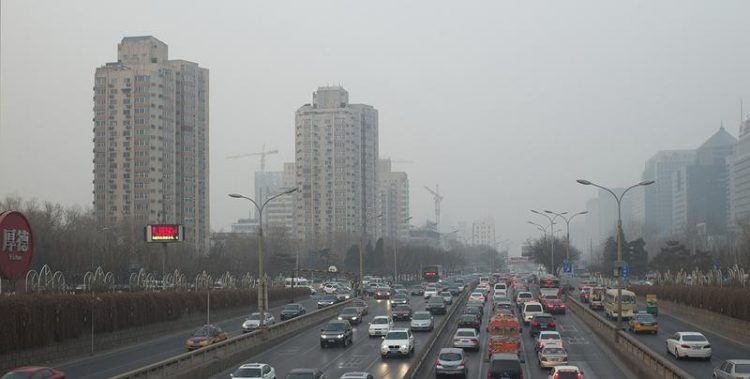The Sun is brightening- but not in China

Peking january 2014 Håkan Pleijel
In the world as a whole, surface solar radiation has increased since 1990, although in China, it has decreased.
Slowing winds increase air pollution
In the study, long-term historical meteorological data were combined with relatively short measurements of air pollution particles in China in an innovative way to clarify interactions among the solar radiation, surface wind and air pollution.
The studies have found that lower solar surface radiation in China is due to a combination of higher air pollution in the area and lower surface winds in China. As in other areas in the northern hemisphere, the surface wind in China has been weakened in recent decades. When the wind slows down, the concentration of small particles of air pollution (aerosols) increase, which help increase haze and leads to solar dimming in the area.
“Mapping the link between solar surface radiation and air pollution is significant since the relationship is heavily masked by clouds which play a major role in affecting solar surface radiation,” says Deliang Chen, Professor of Physical Meteorology at the Department of Earth Sciences, University of Gothenburg and co-author of the research article.
More solar dimming with slowing winds
The research reveals that the solar dimming due to air pollution increased significantly during the day in polluted areas in China, when wind speed was lower than 3.5 metres per second.
The study also shows that 20 per cent of the reduced surface solar radiation in China is due to the concentration of small particles of air pollution (aerosols), which is in turn strengthened by 20 per cent by low wind speed.
The effect of solar dimming is a lower influx of sunlight that affects photosynthesis, among other things, and has profound consequences for the climate, the environment and the economy.
“It was a successful cooperation between colleagues from the US, China and Sweden. I am happy that we succeeded in providing a quantitative estimate of the effect of air pollutant on surface solar radiation in interaction with wind,” says Changgui Lin, the leading author of the article and researcher at the Department of Earth Sciences, University of Gothenburg.
The study is published in Scientific Reports (DOI: 10.1038/srep15135)
For more information, please contact:
Deliang Chen, August Röhss Professor at the Department of Earth Sciences, University of Gothenburg
Tel: +46 (0)31 786 4813, e-mail: deliang@gvc.gu.se, http://rcg.gvc.gu.se/dc/
Changgui Lin, Department of Earth Sciences, University of Gothenburg
e-mail: linchg@itpcas.ac.cn
http://science.gu.se/english/News/News_detail/?languageId=100001&contentId=1…
Media Contact
All latest news from the category: Ecology, The Environment and Conservation
This complex theme deals primarily with interactions between organisms and the environmental factors that impact them, but to a greater extent between individual inanimate environmental factors.
innovations-report offers informative reports and articles on topics such as climate protection, landscape conservation, ecological systems, wildlife and nature parks and ecosystem efficiency and balance.
Newest articles

First-of-its-kind study uses remote sensing to monitor plastic debris in rivers and lakes
Remote sensing creates a cost-effective solution to monitoring plastic pollution. A first-of-its-kind study from researchers at the University of Minnesota Twin Cities shows how remote sensing can help monitor and…

Laser-based artificial neuron mimics nerve cell functions at lightning speed
With a processing speed a billion times faster than nature, chip-based laser neuron could help advance AI tasks such as pattern recognition and sequence prediction. Researchers have developed a laser-based…

Optimising the processing of plastic waste
Just one look in the yellow bin reveals a colourful jumble of different types of plastic. However, the purer and more uniform plastic waste is, the easier it is to…



